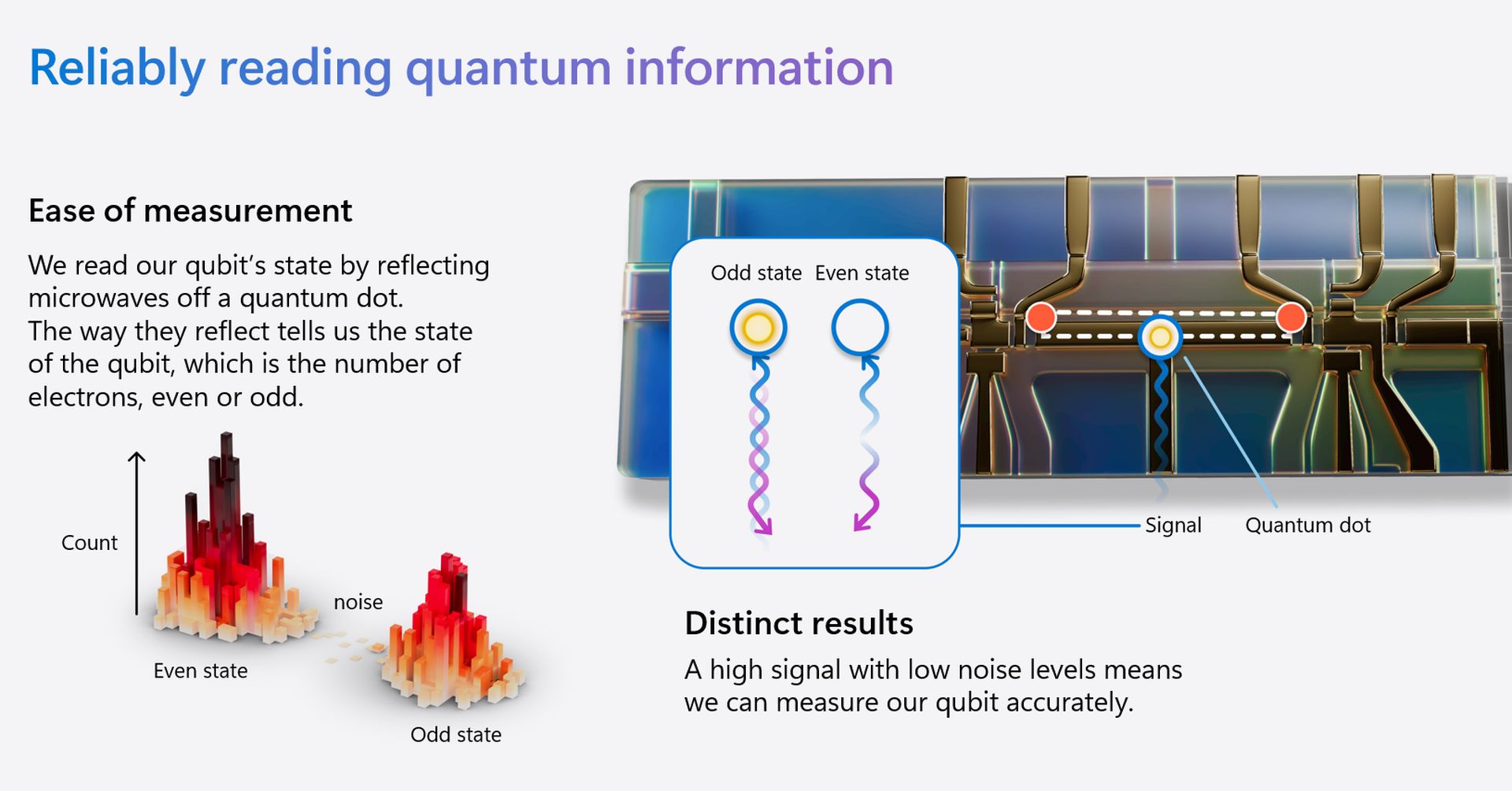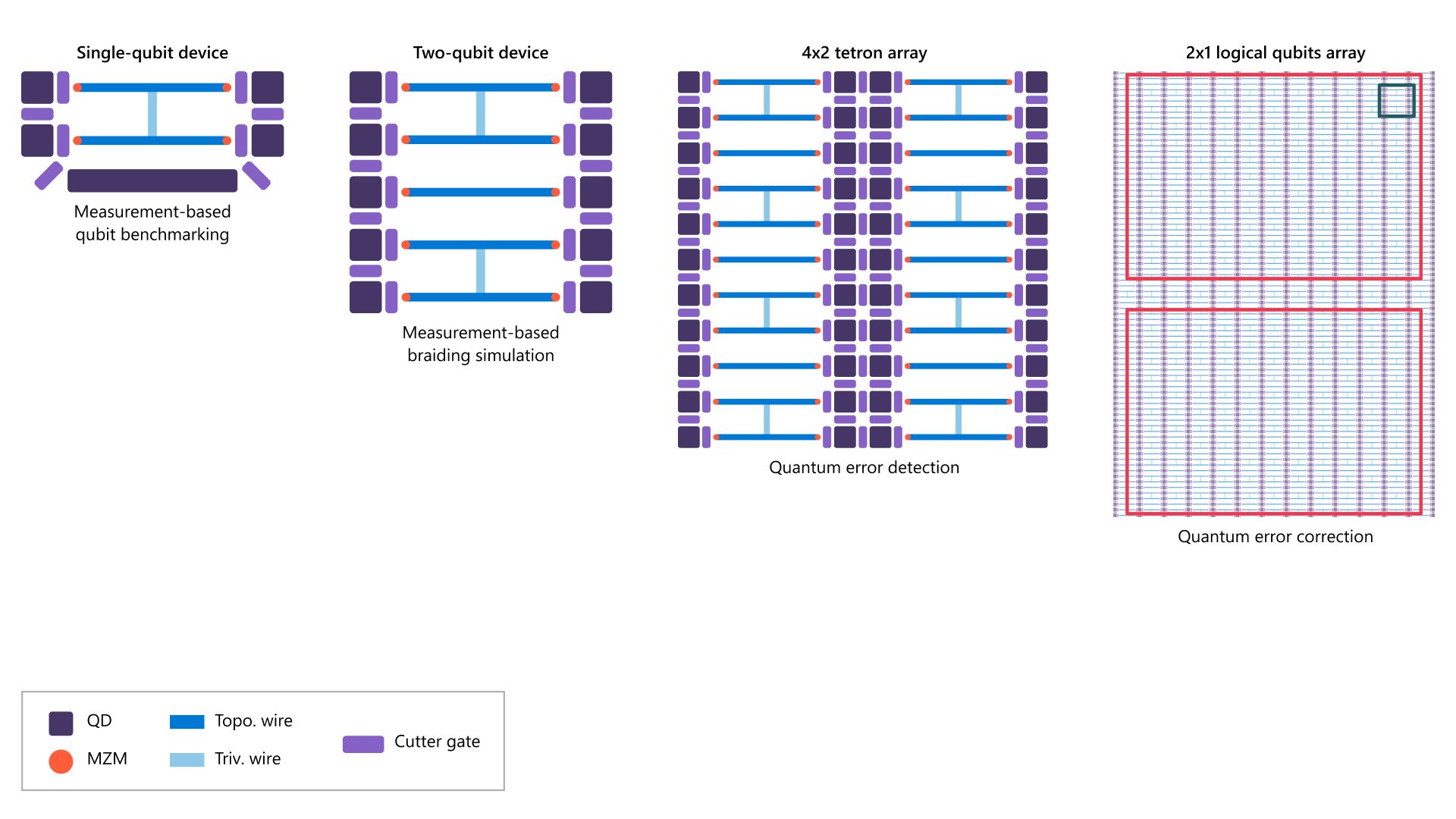Microsoft unveiled its Majorana 1 chip on Wednesday, claiming it demonstrates that quantum computing is “years, not decades” away from practical application, aligning with similar forecasts from Google and IBM regarding advancements in computing technology.
Microsoft unveils Majorana 1 chip for practical quantum computing
Quantum computing promises to perform calculations that would take classical systems millions of years, potentially revolutionizing fields such as medicine and chemistry. However, it also poses a threat to current cybersecurity systems, relying on the extended time required for classical computers to break encryption methods.
A significant hurdle in quantum computing is managing qubits, the fundamental units of quantum information, which are fast but difficult to control and error-prone. Microsoft asserts that the Majorana 1 chip is less susceptible to errors compared to competitors and cites a forthcoming paper in the journal Nature as evidence.
The timeline for the availability of useful quantum computers is subject to debate in the tech industry. Nvidia CEO Jensen Huang recently stated that the technology is two decades away from surpassing his company’s chips, which are integral to artificial intelligence. In contrast, Google has claimed commercial applications for quantum computing lie only five years ahead, while IBM predicts large-scale quantum computers will be operational by 2033.
Developed over nearly two decades, the Majorana 1 chip utilizes a subatomic particle known as the Majorana fermion, theorized in the 1930s, which possesses characteristics that could make it less error-prone. Microsoft designed the chip using indium arsenide and aluminum, employing a superconducting nanowire to monitor the particles, with standard computing equipment for control.

Although the Majorana 1 chip has fewer qubits than rival offerings from Google and IBM, Microsoft believes its chips will require fewer qubits due to lower error rates. No specific timeline for scaling up to create more powerful quantum computers was provided, but the company maintains that advancements are on the horizon.
Jason Zander, Microsoft’s Executive Vice President overseeing long-term strategic initiatives, described Majorana 1 as a “high risk, high reward” endeavor fabricated in Microsoft labs located in Washington state and Denmark. “The hardest part has been solving the physics. There is no textbook for this, and we had to invent it,” Zander said in an interview with Reuters.
Harvard physicist Philip Kim, who was not involved in the research, referred to the Majorana fermions as a significant topic among physicists and deemed Microsoft’s work as an “exciting development” that positions the company at the forefront of quantum research. He noted the promising nature of Microsoft’s hybrid approach that combines traditional semiconductors and exotic superconductors for potentially scalable chips.
Microsoft’s researchers reported they have created a new state of matter called a “topological qubit,” which could be leveraged to tackle complex mathematical, scientific, and technological challenges. This development places Microsoft in a competitive landscape, suggesting an evolution in technological pursuits beyond artificial intelligence.
The competition intensified in December when Google demonstrated its experimental quantum computer completing a calculation in five minutes, which would take traditional supercomputers 10 septillion years to solve. Microsoft intends to enhance its quantum technology potentially surpassing Google’s methods by incorporating topological qubits within a chip that combines the advantages of classical semiconductors and superconductors.
At extremely low temperatures, the chip exhibits unique behavior that Microsoft believes will enable solutions to challenges unattainable by classical systems. The company asserts its technology is less volatile than other quantum technologies, improving the feasibility of utilizing this power.
Despite skepticism from some academics regarding the feasibility of Microsoft’s progress, the technology discussed in a research paper published in Nature on Wednesday propels efforts that could significantly impact technological landscapes. The advances may have broader implications, including the ability to compromise encryption that ensures national security.
While the United States is advancing quantum computing primarily through major corporations like Microsoft, China reportedly invests $15.2 billion into the technology, alongside the European Union’s commitment of $7.2 billion.
Quantum computing, rooted in decades of quantum mechanics research, is still at the experimental stage. However, recent advancements by Microsoft, Google, and other players may soon enable the field to fulfill its anticipated potential.
Understanding how quantum computing differs from traditional computing involves recognizing that classical computers use bits to store and process information in binary form (either 1 or 0). In contrast, quantum computers manipulate qubits, which can represent a combination of 1 and 0 simultaneously. This property allows a quantum computer to hold vastly greater amounts of information as the number of qubits increases.
While numerous companies, including Google, primarily utilize superconductors to create qubits by cooling metals to low temperatures, Microsoft is focused on a hybrid approach that merges semiconductors and superconductors, originating from principles conceptualized by physicist Alexei Kitaev in 1997.

Microsoft’s project, which began in the early 2000s, is its longest-running research initiative, with a commitment from all three of its CEOs, including current CEO Satya Nadella. The company developed a device composed of indium arsenide and aluminum; when cooled to around 400 degrees below zero, it displays behaviors that may confirm the viability of quantum computing.
Philip Kim described the creation as significant, stating that topological qubits could push the field forward. Nonetheless, Jason Alicea, a theoretical physics professor, suggested there remains uncertainty about the realization of a true topological qubit and called for verification of the claims, emphasizing that the project holds promise for future advancements in quantum technology.
Currently, Microsoft reported constructing only eight topological qubits that are not yet calibrated for meaningful calculations but are regarded as a crucial step toward achieving more powerful quantum computing. Despite the technology facing issues with errors, scientists are exploring methods to enhance accuracy and performance.
As Google showed in its experiments, increasing the qubit count significantly reduces errors through advanced mathematical techniques, which may become more effective for Microsoft if topological qubits are perfected, potentially offering a less complicated error correction approach.
Although qubits can hold multiple values simultaneously, they face the challenge of decoherence when information is retrieved, collapsing into a conventional bit. Researchers need to address how to maintain the integrity of qubit-based systems during operation. Microsoft believes the unique properties of topological qubits may solve this challenge, where they would remain stable when information is accessed.
Featured image credit: Microsoft





